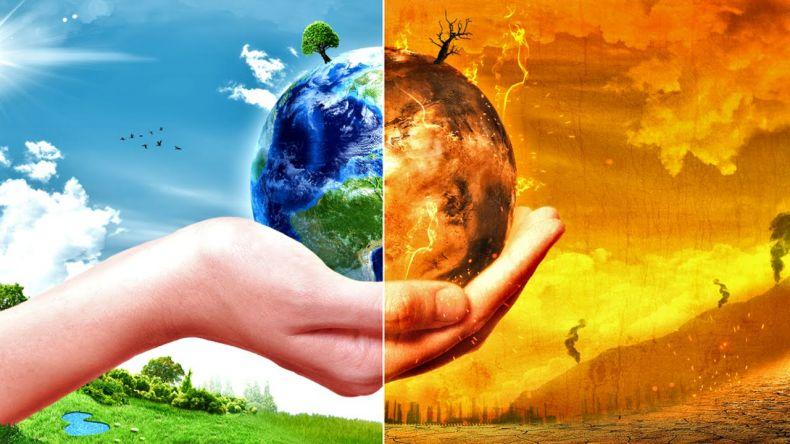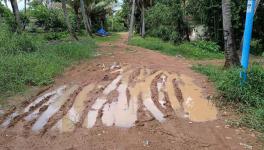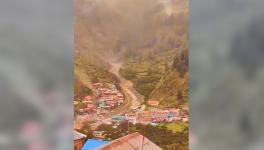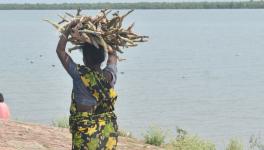Mother Nature and the Ides of a Pandemic

The iconic American newspaper The Washington Post adopted an inimitable slogan in 2017, which sums up a perennial threat: “Democracy Dies in Darkness”. Ironically, we are witnessing the sad and unconscionable death of nature in the Ides of COVID-19, and yet nobody seems to notice the approaching darkness.
India has refused to buck the old way of doing things, as though COVID-19 were just a bad dream. It has not found a new way of thinking about future transactions, which is as astonishing for its naiveté as it is for persisting with egregious wrongs of the past. I allude not to the neglect of healthcare — that is starkly obvious from the vehement surges of the viral infection — but to a root cause that is germane to pandemics that loom in the future.
The issue is the draft Environment Impact Assessment 2020 (EIA) notification, published on March 12 — the day after COVID-19 was declared a pandemic by the World Heath Organisation (WHO). To any individual or organisation with even a passing acquaintance with nature, this draft is preposterous if ever one was. That the Indian nodal ministry of Environment, Forests and Climate Change conceived and proposed it is plainly arrant.
For, the draft EIA flies in the face of the rationale of the ministry, which is as follows:
“The primary concerns of the Ministry are implementation of policies and programmes relating to conservation of the country’s natural resources including its lakes and rivers, its biodiversity, forests and wildlife, ensuring the welfare of animals, and the prevention and abatement of pollution. While implementing these policies and programmes, the Ministry is guided by the principle of sustainable development and enhancement of human well-being.”
Now, take a look at the rationale of the EIA from an abstract of ‘EIA in a Risk Society’, a 2007 paper by Joe Weston, who taught planning at Oxford Brookes University, which was published in the Journal of Environmental Planning and Management:
“Environmental Impact Assessment (EIA) was developed and introduced in the 1960s during a time that was dominated by three key societal influences. These were the growth of modern environmental concern, the drive for more rational, scientific and objective environmental decision making and a desire for more public involvement in environmental decision making. The legitimacy of EIA, as a tool to aid decision making, lies in its ability to meet the requirements of all three demands, the chief among these being its ability to be a systematic scientific and rational approach to decision making. Yet today we live in a society that no longer accepts the rationalist model as either possible or desirable. The deference to ‘the expert’ and our trust in science and technology has steadily declined during the period of EIAs development and widespread use. Today, EIA still depends for its legitimacy on its claim to provide a systematic and scientific approach to assessments, while society has moved on.”
Plentiful infractions of the foundational principles of EIA are at the heart of India’s latest draft EIA, for which many environmentalists and commentators have rightly criticised it. Beyond the proposal for post facto approval of projects, exemption of activities such as extraction, sourcing or borrowing of ordinary earth for linear projects and dredging or de-silting of dams, reservoirs, rivers and canals, the dilution of environmental standards in the draft EIA militates against the Rio Declaration of 1992 that helped set up the EIA framework in India. It also flouts several multilateral environmental agreements to which India is party.
Critics have expressed concerns that the EIA will become a tool to “wield political control” such that “economic projects and actors can be moulded to political ends.”
These are legitimate and well-founded apprehensions that are hard to quibble with. One cannot miss the shrinkage of time for public hearings from 30 to 20 days, nor that the government of India is attempting to alter Centre-state relations by giving itself more control over how the state-level regulatory authorities and expert committees are constituted.
But environmental violations aside, consider the buccaneering desecrations of nature that the EIA presages. It is these that provide a neat segue into the lessons we have not learned from the COVID-19 pandemic.
The novel coronavirus is of zoonotic origin: it spawned in the wild and jumped from bats to humans through an intermediate animal. The famous ecologist Peter Daszak wrote in The New York Times that “unprecedented road-building, deforestation, land clearing and agricultural development, as well as globalised travel and trade make us supremely susceptible to pathogens like coronaviruses…Pandemics are like terrorist attacks: we know roughly where they originate and what’s responsible for them, but we don’t know exactly when the next one will happen. They need to be handled the same way — by identifying all possible sources and dismantling those before the next pandemic strikes.”
Put differently, environmental depredation facilitates pathogen reproduction and promotes human health crises, including pandemics.
“To escape from the Age of Pandemics,” Daszak noted, “we’ll need to treat them as a public health issue and start working on prevention in addition to responses. Our first goal should be to broaden our armoury against potential mass epidemics.”
Prevention of pandemics is better and less damaging to life and property than prophylaxis in the form of vaccine. “When some of us added ‘Disease X’ to the WHO’s priority list two years ago, Daszak wrote, “we wanted to make the point that it’s not sufficient to develop vaccines and drugs for known agents when the next big one is likely to be a different pathogen — a virus close to SARS, say, but not close enough that the same vaccine can work against both.”
It is clear that the answer lies in coalescing the environment with healthcare; environmental interference feeds into diseases which leads to periodic epidemics or pandemics. In other words, any disease is a manifestation of humankind’s cavalier treatment of nature, and they are largely born from Homo Sapiens’ hubris. For all its vainglory, humans cannot beat back nature. Instead, we will pay collectively and dearly for our environmental misadventures.
Mother Nature, Global Warming and Humans on Earth:
In a lacerating piece published on The New York Times on March 31, Thomas L. Friedman excoriated Trump’s stock-market obsession: “Mother Nature, alas, doesn’t ‘open’ her workday at 9:30 am or close it at 4 p.m. Monday through Friday and then take weekends off,” he wrote.
“Mother Nature is just chemistry, biology and physics. That’s all she is…” Friedman recalled one of his teachers saying: “You cannot sweet-talk her. You cannot spin her. You cannot manipulate her. And you certainly cannot tell her, ‘Mother Nature, stop ruining my beautiful stock market’.” He distinguished a pandemic from climate change — the latter does not peak, flatten out and dissipate or be permanently prevented by vaccine. Nor is there herd immunity to climate change. “There are only endless impacts on the herd,” he wrote eloquently.
Such warnings are not new though. Red flags were always being raised, but nobody of consequence in most of the world responded. The world was busy watching capitalism in full play, the free market at its acme, and enjoying its Indian Summer. There were once-a-while setbacks, but the rich were getting richer so how did it matter if the poor were getting poorer? The bubble was holding.
The Intergovernmental Science-Policy Platform on Biodiversity and Ecosystem Services (IPBES) report of May 2019 sounded the alarm. The canary was out of the coal mine now.
“Nature and its vital contributions to people, which together embody biodiversity and ecosystem functions and services, are deteriorating worldwide… Both nature and nature’s contributions to people are vital for human existence and good quality of life… While more food, energy and materials than ever before are now being supplied to people in most places, this is increasingly at the expense of nature’s ability to provide such contributions in the future and frequently undermines nature’s many other contributions, which range from water quality regulation to sense of place… Biodiversity—the diversity within species, between species and of ecosystems—is declining faster than at any time in human history,” it wrote.
Not that the world — especially in the 1900s — did not notice the unacceptable marauding of the Earth. The loss of species accelerated in that century and ecosystems fragmented. In June 1969 came the bizarre sight of Cuyahoga river in Ohio, United States, burning. There were other tell-tale signs that the world’s protective natural shield had been breached.
“The rate of global change in nature during the past 50 years is unprecedented in human history,” the IPBES report said. “The direct drivers of change in nature with the largest global impact have been… changes in land and sea use; direct exploitation of organisms; climate change; pollution; and invasion of alien species.”
There is no doubt that conservation goals and sustainable growth cannot be met by our current trajectory. In other words, it is too late for exorcism. We require “transformative changes across economic, social, political and technological factors” and we need governance systems to adapt to multi-sectoral planning. Strategic policy mixes could perhaps help transform the public and private sectors and achieve sustainability at the national and global levels. But these are big ifs.
To return to Friedman, he is not painting a dystopia but stating reality when he said that the “first rule of scientists for climate change mitigation happens to be the first rule for public health officials of COVID-19 mitigation: Manage the unavoidable so that you can avoid the unmanageable… epidemiologists will tell you that climate change may well be the next great engine for the next pandemic”.
He is far from alone. The scientific journal Nature reported that the effect of climate change and the warming of the Earth have already taken a heavy toll on Australia’s Great Barrier Reef— coral reproduction has fallen “by a staggering 89% following two severe mass bleaching events in 2016 and 2017”.
Not as well-known are phenomena impacting other spheres of human existence. Over millennia, human habitation has concentrated within a “surprisingly narrow subset of earth’s available climates, characterised by mean annual temperatures around 13°C”, Nature reported. A study published in the journal Proceedings of the National Academy of Sciences (PNAS) said that the earth’s temperature in the next 50 years would rise more than it rose cumulatively over the last 6,000 years.
“Growing populations will experience MATs [Mean Average Temperature] currently found in very few places. Specifically, 3.5 billion people will be exposed to MAT ≥29.0°C, a situation found in the present climate only in 0.8% of the global land surface, mostly concentrated in the Sahara, but in 2070 projected to cover 19% of the global land,” the study said.
It would translate to expanding extreme hot zones, as in the Sahara—except that the Sahara covers less than one percent of the earth’s land surface today, while Sahara-like zones in 2070 could cover 20% of the landmass. This would likely place one of every three people alive outside the 13-degree climate niche. A finding published in the journal Science Advances in August 2017, surmised that venturing outdoors in such temperatures for even a few hours will result in “death even for the fittest of humans under shaded, well-ventilated conditions”.
Lest we forget, the “most intense hazard from extreme future heat waves” will likely be in the Ganges and Indus river basins. Climate change is a particularly serious threat for South Asia, where a fifth of the global human population lives and which is at risk from unprecedented severe natural hazards that make it acutely vulnerable.
The author is a former civil servant. The views are personal.
(This is the first of a two-part series on the connection between pandemics and climate change.)
Get the latest reports & analysis with people's perspective on Protests, movements & deep analytical videos, discussions of the current affairs in your Telegram app. Subscribe to NewsClick's Telegram channel & get Real-Time updates on stories, as they get published on our website.
























